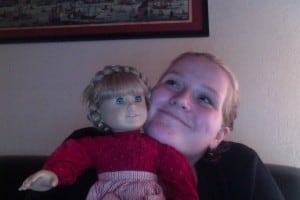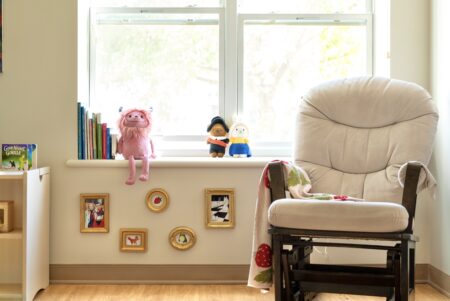The year was 2000. I was seven years old and absolutely obsessed with American Girl.
American Girl was a cultural phenomenon. Now that the first generation of American Girl-owners are in their early twenties, there are nostalgic articles about them all over the internet. For those of you who don’t know, American Girl dolls were a collection of historical figures originally produced by the Pleasant Company; but they were so, so much more than that.
Because of their stories, the girls were more than dolls: they both represented their respective eras and experienced universal challenges that united them over time. (For the first few decades of American Girl’s existence, all the characters shared the same book titles: Meet X, Changes for X, etc.) American Girl was my introduction to historical fiction. The books were addictive and totally fascinating to me.The girls each came from and represented a different historical period. They came with a set of six books, chronicling the major milestones in their young lives. As a piece in the Atlantic points out, the original storylines didn’t shy away from the controversial issues of their time: Kirsten (a girl on the American Frontier)’s best friend dies in the journey to Minnesota, Samantha, the Victorian doll, battles the child labor laws, and Addy, from the Civil War Era, escapes slavery.
But as much as I loved all the characters’ storylines, my absolute favorite was Felicity. She was a spunky and energetic girl living in 1774, and her stories tackled issues of gender inequality and self-confidence. I read her books countless times and absolutely loved her. I thought she was my doll-soulmate. It was only years later that I realized with a touch of amusement that many of the protagonists of my own novels had been red-haired and freckled, like Felicity.
And I so, so badly wanted a Felicity doll. Almost all of my friends had American Girl dolls, and they, (oh tragedy) would have ‘American Girl parties’ that I wouldn’t attend because I didn’t have my own. But the dolls were $80, and for my frugal Dutch momma, that was not happening. The only one she would even consider was Kit, the Great Depression doll, who made her own birthday dress out of burlap sacks because her family couldn’t afford to buy her one. But Kit, with her short blonde hair and bright blue eyes, looked like me- and I didn’t want that. I wanted a Felicity doll.
But I didn’t. I am now 19 years old, and I still occasionally search Ebay and the American Girl website to sigh over the small beauty of things like Kirsten’s quilt or Rebecca’s Sabbath set.
Why is that? The company is far from perfect- there has been a lot of criticism about them, much of which I can appreciate. The historical characters were largely white and Euro-centric, and one of the line’s only two black historical figures literally begins her story in slavery (the other was only introduced into the line last September). Parents have also questioned American Girl’s commitment to feminist messages. But I never found the historical dolls to be problematic as a child. In fact, they were one of my primary sources for learning about self-worth and defying society’s standards. I understand that the brand’s heavy emphasis on girlhood is fraught, especially for parents trying to raise their children in a gender-neutral environment free from a lot of the toxic messages children get about themselves and internal value. But for me, the doll’s unsexualized bodies and strong narratives helped to battle a lot of those negative messages for a long time.
Much of the criticism directed towards American Girl of late has happened since its purchase my Mattel (of Barbie fame). With the switch, the brand started focusing more on modern dolls that look ‘just like me!’. I find these much more problematic than the originals: instead of uniting themes like growing up and facing changes, they share charms for traits like ‘artistic,’ ‘athletic,’ or ‘sparkle’ (?). The racial choices are less limited, but the modern-girl furniture and clothing represent a very specific demographic: the kind of girl who can afford piano and cello lessons, multiple pets (including horses) and have her own buggy.
Certainly not my kind of girl.
This is what most modern parents harp on: they value the characters’ strong storylines and their unsexualized nature, but not the heavy price tag that accompanies those qualities. I understand that. My story of being left out of American Girl parties is far from the only one, and I imagine that it’s much more difficult to be the parent in that situation than the excluded child.
For this reason, I think, to many parents the American Girl dolls represent immense financial privilege and some kind of big machine, intending to trick you into spending $300 on doll furniture so your daughter will ‘fit in’. But the American Girl I grew up with was about narratives, not accessories. I no longer identify with Felicity- now I value characters like hardworking Kirsten and brave Addy more, maybe in response to the changes I’ve undergone since I was ten. But the remarkable thing is that I still identify with their stories at all. I remember their narratives ten years after I last checked them out from the library.
That’s what made American Girl special. The American Girl characters were my first role models: Kit taught me about the importance of family and gratitude. Samantha, who came from a rich background, taught me about privilege and helping others. Kirsten was tough and creative: she taught me about perseverance and growing up. And spunky, feisty Felicity gave me my first messages of early feminism, and (gasp!) questioning authority.
So, if American Girls to me were more about narratives than accessories, why am I still so drawn to the huggable, physical representation of those stories? Can I bring together my love for Kirsten and my bafflement at paying $105 for one of the only nonsexualized toys on the market? Am I too old to even care anymore?
Apparently not, because I just bought myself a well-worn Kirsten doll on Ebay







By the time your frugal Dutch and guilt-stricken momma was halfway through this post she realized she had made a TERRIBLE mistake. I had already made up my mind about checking out Ebay before I reached the end of your blog. Welcome, Kirsten, to our family!
And had I known, Hope’s Felicity could have shared the guest room with you :). One of my college classmates did come up with a great scheme which I adopted. It when like this…
Darling daughter, these dolls are very expensive so you if you get one, there will be only one. In order to make an informed choice, you must read about each of them — at least one book but more if possible. Once you have read all those books and have an informed decision, your parents will buy you one.
That is how Molly, Felcity, and Samatha came to live at our house. Conveniently, Santa sometimes caught wind of it and packed a few accessories in the sleigh.
Hey Ms. Bernhardt! Thanks for checking out my blog (: That sounds like a solid game plan. Maybe I’ll keep it in mind for my children and whatever their toy-du-jour will be one day.